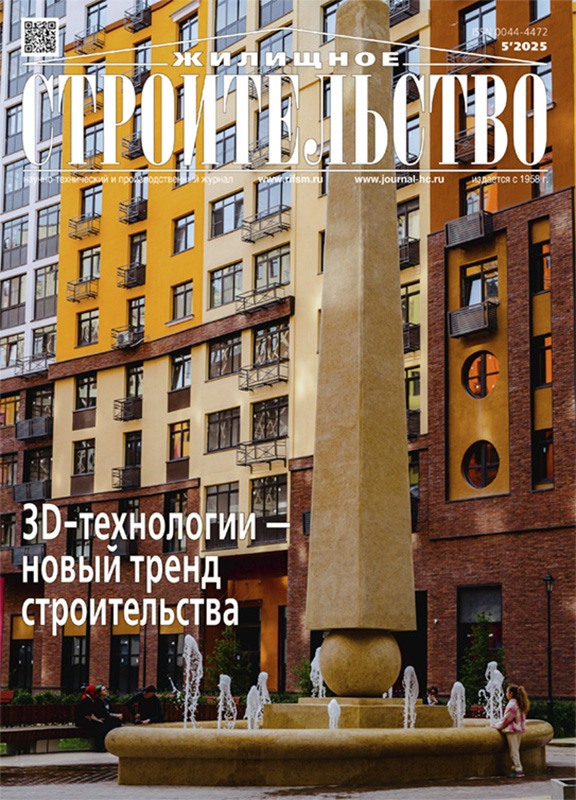Experience as the Main Criterion in the Parametric Rationing Method
- Authors: Shashkin A.G.1, Ulitsky V.M.1
-
Affiliations:
- Georeconstruction Institute
- Issue: No 5 (2025)
- Pages: 28-38
- Section: Articles
- URL: https://rjmseer.com/0044-4472/article/view/684359
- DOI: https://doi.org/10.31659/0044-4472-2025-5-28-38
- ID: 684359
Cite item
Abstract
The current issue of a fundamental change in construction activities rationing is discussed, namely, the transition from the prescriptive principle of standards building to the parametric one. It is shown that such transition contains a high risk of losing the design quality, since along with it the quintessence of the accumulated by decades and even centuries experience, which is the core of the construction art, contained in the prescriptive method, is lost. It is noted that mastering the art of construction has always followed the pattern of medieval workshops – from a student (university graduate) to an apprentice, who for several years adopted the art of a master, and finally to the master, who has right to engage in professional activity independently. In modern Russia as the Soviet institutions disappeared, the continuity in the design business, the natural transfer of experience from generation to generation, has been broken. Self-regulation of construction activity by placing in the center of the liability system a legal entity instead of a physical person has significantly distorted the professional responsibility principle, generally accepted in foreign and Russian practice, which can only be based on the specialist competence (a legal entity cannot possess competence in the absence of a competent person). Giving standards a recommendatory character, the status of voluntary application, the creation of non-governmental expertise, independent certification of specialists, the transition from a prescriptive rationing method to a parametric one, and similar innovations not be able to bring positive results until a specialist is placed in conditions that oblige him to master the art of construction and design experience.
Full Text
About the authors
A. G. Shashkin
Georeconstruction Institute
Author for correspondence.
Email: 9563513@gmail.com
Doctor of Sciences (Geology)
Russian Federation, 4, Izmailovsky Ave., Saint Petersburg, 190005V. M. Ulitsky
Georeconstruction Institute
Email: mail@georec.spb.ru
Doctor of Sciences (Engineering), Professor, Scientific Supervisor
Russian Federation, 4, Izmailovsky Ave., Saint Petersburg, 190005References
- Krylov S.B., Sharipov R.Sh., Zenin S.A., Volkov Yu.S. Directions of convergence of the requirements of the main domestic standard for the design of concrete and reinforced concrete structures SP 63.13330.2012 with the requirements of the international standard ISO 19338. Stroitel’nye Nauki. 2019. No. 1, pp. 93–98. (In Russian). EDN: IIVNJV. https://doi.org/10.22337/2077-9038-2019-1-93-98
- Yevtushenko S.I., Krakhmalny T.A., Akhmedov I.A., Arabov R.E. Features of the application of European standards in Russia. Stroitel’stvo i arkhitektura. 2019. Vol. 7. No. 1, pp. 76–81. (In Russian). EDN: ZERBTF. https://doi.org/10.29039/article_5ca75fa5aeccf8.03228738
- Chudnykh V.V., Abakumov R.G. The legal foundations of the regulation of the construction process in Germany. Innovatsionnaya nauka. 2017. No. 02–2, pp. 142–143. (In Russian). EDN: XVSIQX
- Vinogradova O.A. Foreign experience in quality management of construction products on the example of Germany and its adaptation to Russian reality. Voprosy Sovremennoi Nauki i Praktiki. 2014. No. 1 (50), pp. 153–159. (In Russian). EDN: RYDXBV
- Ulitskiy V.M., Shashkin A.G., Shashkin K.G. Geotekhnicheskoe soprovozhdenie razvitiya gorodov [Geotechnical support of urban development]. Saint Petersburg: Stroyizdat Severo-Zapad, Georekonstruktsiya. 2010. 551 p.
- Bogdanov M.I. On a possible approach to the organization of a system of regulatory documents for conducting engineering and geological surveys. Inzhenernaya geologiya. 2007. No. 9, pp. 4–5. (In Russian).
- Ulitskiy V.M., Shashkin A.G., Shashkin K.G. Gid po geotekhnike. Putevoditel’ po osnovaniyam, fundamentam i podzemnym sooruzheniyam [Guide to geotechnics. A guide to foundations, foundations, and underground structures]. Saint Petersburg: Georekonstruktsiya. 2012. 288 p.
- Bulgakova L.I. Some problems of the development of the Institute of self-regulation in the business sphere. Trudy of the Institute of State and Law of the Russian Academy of Sciences. 2014. No. 1, pp. 54–74. (In Russian). EDN: RZQEEN
- Punin A.L. Arkhitektura Peterburga serediny i vtoroi poloviny XIX veka [Architecture of St. Petersburg in the middle and second half of the 19th century. Volume I. The 1830s and 1860s. Early eclecticism]. Saint Petersburg: Kriga. 2019. 592 p.
- Shashkin A.G., Voloboy S.A., Tikhomirova L.K., Checkster K.V. The Kronstadt fort «Alexander I» is a masterpiece of Russian engineering in the middle of the 19th century. Geotekhnika. 2020. No. 4, pp. 42–59. (In Russian). EDN: HXBUHG. https://doi.org/10.25296/2221-5514-2020-12-4-42-59
Supplementary files















